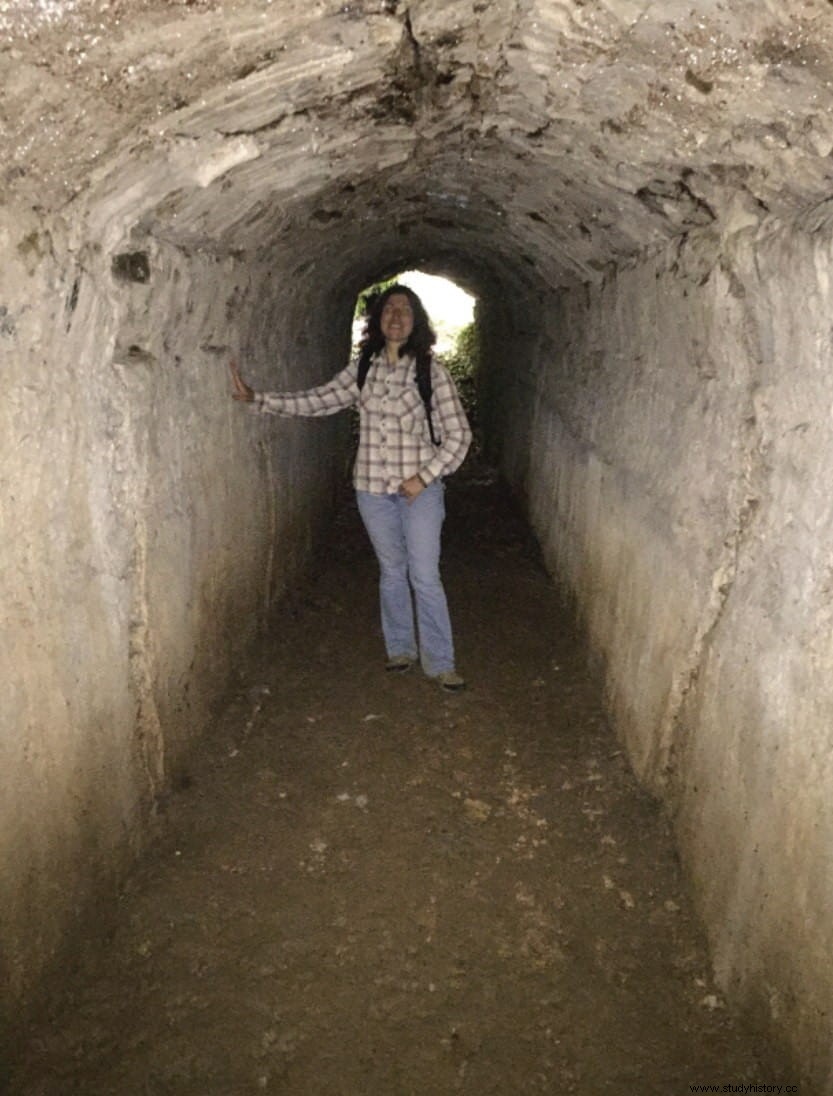The aqueducts are very impressive examples of the art of construction in the Roman Empire. Even today, they continue to bring new insights into the aesthetic, practical and technical aspects of their construction and use. Scientists from the Johannes Gutenberg University of Mainz (JGU) investigated the longest aqueduct in antiquity, that of Emperor Valens that supplied Constantinople, 426 kilometers long, and revealed new insights into the maintenance of this structure in the past. Apparently the canals had been cleared of carbonate deposits only a few decades before the site was abandoned.
The Roman Empire was ahead of its time in many ways, with a strong commitment to building infrastructure for its citizens that still fascinates us today. This includes architecturally inspired temples, theaters and amphitheatres, but also a dense network of roads and impressive ports and mines.
However, the most innovative technical achievement of the Roman Empire lay in its water management, in particular its long-distance aqueducts that supplied water to cities, baths and mines , said Gül Sürmelihindi, from the Geoarchaeology group at the University of Mainz.

Aqueducts were not a Roman invention, but in Roman hands these long-distance aqueducts were developed and spread widely throughout one of the greatest empires in history.
Almost all the cities of the Roman Empire had an ample supply of fresh running water, in some cases with a greater volume than today. These aqueducts are best known for their impressive bridges, such as the Pont du Gard in southern France, which are still standing after two millennia. But they are made more impressive by the way problems in their construction were resolved, which would be daunting even to modern engineers said JGU professor Cees Passchier.

To date, more than 2,000 long-distance Roman aqueducts are known, and many more are yet to be discovered. The study by Dr. Gül Sürmelihindi and her research team focuses on the most spectacular late Roman aqueduct, the water supply lines of Constantinople, present-day Istanbul in present-day Turkey.
In the year 324, the Roman Emperor Constantine the Great made Constantinople the new capital of the Roman Empire. Although the city is at an important geopolitical crossroads of land and sea routes, the supply of fresh water was a problem. For this reason, a new aqueduct was built to supply Constantinople from springs located 60 kilometers to the west.
As the city grew, this system was extended in the 5th century to springs located as far as 120 kilometers from the city in a straight line. This gave the aqueduct a total length of at least 426 kilometers, making it the longest in the ancient world.

The aqueduct consisted of masonry vaulted canals large enough to walk through, built of stone and concrete, 90 large bridges, and many tunnels up to 5 kilometers long.
Sürmelihindi and her team studied the carbonate deposits of this aqueduct, that is, the lime that formed in the running water, which can be used to obtain important information about water management and the paleoenvironment of the time. The researchers found that the entire aqueduct system contained only fine carbonate deposits, representing about 27 years of use.
However, from the annals of the city it is known that the aqueduct system worked for more than 700 years, until at least the 12th century. This means that the entire aqueduct had to be maintained and cleaned of deposits during the Byzantine Empire, even shortly before it stopped working Sürmelihindi explained.
Carbonate deposits can block your entire water supply and have to be removed from time to time.

Although the aqueduct is of late Roman origin, the carbonate found in the canal is from the Byzantine Middle Ages. This got the researchers thinking about possible cleaning and maintenance strategies, as cleaning and repairing a 426-kilometre canal means it cannot be used for weeks or months, while the city's population depends on its water supply.
Thus, they discovered that 50 kilometers of the central part of the water system are built in a double way, with one aqueduct channel above the other, which is crossed by double-deck bridges. It is very likely that this system was established to allow cleaning and maintenance operations Passchier said. It would have been an expensive but practical solution .
Unfortunately for the research team, it is no longer possible to study the exact workings of the system. One of the most imposing bridges, the Ballıgerme bridge, was blown up with dynamite in 2020 by treasure hunters who mistakenly believed they could find gold among the ruins.
